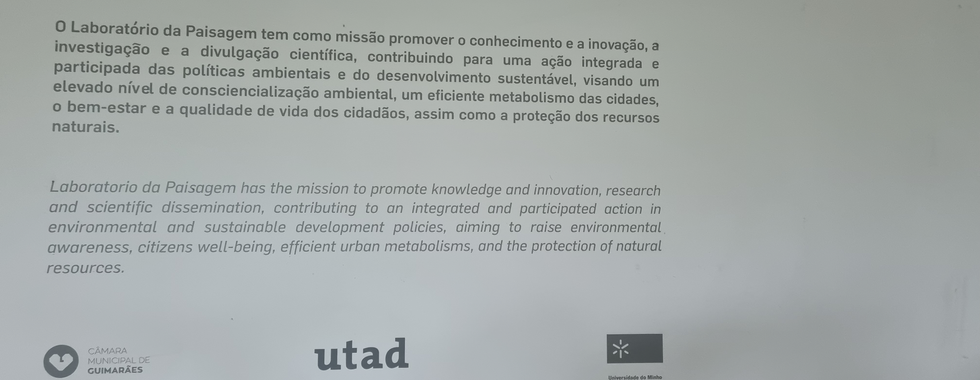Stramurales - Study Visit Portugal
- Street Art Museum Amsterdam
- Jun 14, 2023
- 5 min read
Guimaraes is a city and municipality located in northern Portugal, in the district of Braga. Its historic town centre has been listed as a UNESCO World Heritage Site since 2001, in recognition for being an "exceptionally well-preserved and authentic example of the evolution of a medieval settlement into a modern town" in Europe. Guimarães is also a part of the Ave Subregion (one of the most industrialised subregions in the country), as well as the historical Minho Province. The city has a population of 156,849 inhabitants in an area of 242,85 square kilometres (93.03 sq mi). Guimarães, along with Maribor, Slovenia, was the European Capital of Culture in 2012.

The study visit trip came down to a 3-days roller-coaster of information, experiences and culture! Our host - Desincoop Cooperativa : Desenvolvimento Económico, Social e Cultural is a Service producers’ cooperative, formally created in May 2005, was formed primarily to meet the needs for a set of people with experience but due to age feeling more difficulty in obtaining some stability in labor market. The underlying philosophy of this cooperative is the total adhesion of its members and collaborators (22) to cooperative principles, which constitutes the main rule for the adhesion of new members as well as ethical and civil behavior in the defense of sustainable development. All Desincoop’s collaborators have a Professional Skills Certificate and experience as trainers; some are university professors acting as senior consultants. Desincoop has specialists in the field of arts and creative activities. All of them are trainers and some are University Teachers acting as senior consultants.
For the next days, the team acquainted us with the history of the regeneration process that was conducted by the city not only for the UNESCO classification, but also for being one of the Capitals of Culture. The regeneration process was also part of the preparation phase and this is the reason why the Municipality chose different industrial spaces to convert in cultural or scientific spaces (Fábrica Asa, Design Institute, Casa da Memória, Ciência Viva, United Nations University and Landscape Lab). We visited 2 such organisations: CyberCentro, structure created for CEC and under proposal to be classified as UNESCO heritage, & Landscape Lab, one of the structures created for CEC 2012 - a mix between a museum, information centre and applied practice - which are both situated in the old up-cycled constructions. Landscape Lab is a research organisation carrying for sustainable development that was an axe of the application for Guimarães being Capital of the Culture. The main objective for our group to do this visit was to give us the real extension of the county, the dispersion of inhabitants and also the difficulty to engage and mobilize them for cultural events. This was the reason why DesinCoop developed during the Capital of Cultura the extemded dimension community and tried to create some structures and events that reach people where they live and not concentrate all the events in the city center. The food was prepared by local volunteers and members of DesinCoop.
Then, we attended a reception with Paulo Silva Councillor for Culture of Guimarães City Council at CIAJG - Centro Internacional das Artes José de Guimarães, Museu de Arte. A couple of days earlier, in Porto, a famous urban artist Hazul told me about this museum and his favourite contemporary artist from Portugal there: José de Guimarães. I could not wait to get inside, but first, we had a working sessions with Fatima Lambert, Phd, Cultural Heritage, Pedro Silva, Phd thesis on the CEC impact, and Liliane Master, Street Art in Guimarães. It was very interesting to see how each city is different in gathering the database of street art - known and unknown - and how diverse is the spectrum of where the researchers come from.
Pedro was one of the persons that work directly on the cultural production of the European Capital Cultural, and later was the Director of CIAJG. He still supports a lot of events and artists at the local level. Fatima was and still cooperates with cultural events and makes a big effort to interest her students in our national, and local productions. The group discussed together the lack of dynamic scene of street art in Guimaraes and how it is geographically and politically dependent on funds, for example the project that finished last month in 7 neighborhoods, or those that the local authorities implement to save the memories of the territory. We were introduced to a mix of initiatives like Bairro C, in which Guimaraes hosted different street artists and performers.
It made me reflect on Alicante, where the stories of the street art are saved by the tour guide and active residents, and here - it was a team of academics from philosophy and polytechnic.In Amsterdam - I was a digital producer in advertising, and in Stornara - a group of pensioners with an eye for art. What brought us all together on these study visits was the power of Street Art, a tool that is out there, made by anonymous angels of the night free of charge to the viewer.
We also visited an organisation behind Freepass initiative, whereby Ivo André shared the story of an example of entrepreneurship in communication of cultural events, and were given a presentation about Guimarães Set.up, where several street art artists have been supported not only but also other artists that turn in important companies linked with brands and technologies.
As always, there is no culture without food, which throughout the trip has varied from amazing to even more amazing, and thanks to Luisa Oliveiro, the President of DesinCoop, we have tried every single typical dish of the region.
The last day was equally intense, and started with the Working Session where everyone has discussed their reflections on the project and its progress so far, in preparation to the final visit to Stornara in August 2023. Afterwards, we visited Saturday farmers market and a bus took us to the Montanha da Penha, where we had a lot of fun in nature.
The final event took place later that afternoon in CAAA - Centro para os Assuntos da Arte e da Arquitetura. We met a founder of CAAA - Ricardo Areias, and Carlos Correia, a creative director of Outra Voz, a network of residents who use words, voices and stories to build a more inclusive sustainable community. We heard the stories of commercial exploitation of passion for arts & culture - a location, as juxtapose to a social application - a community, which has no location. The dinner was cooked by 2 artists in residents who took over the community kitchen and was - YES! BERLIN-HIPSTER VEGAN! What a treat for the end of an incredible journey through history, knowledge and culture.
Tired and happy, having had a long kiss-good-bye and a couple of dozens of hugs, we parted to the airport, ready to meet again in August in Stornara, Italy.






























































































































































































































